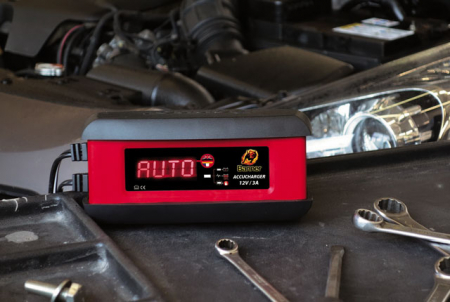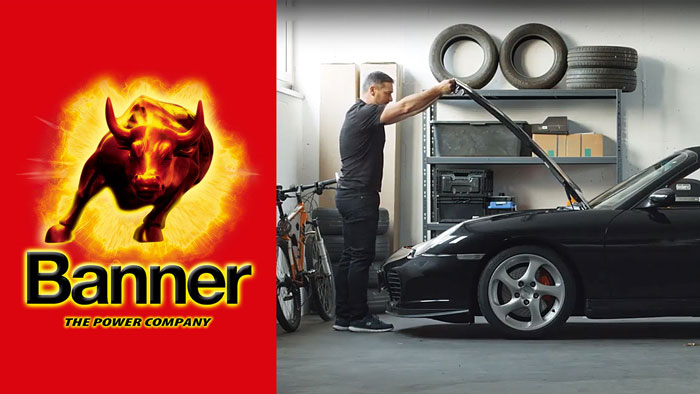HOW TO: HIBERNATE A CAR BATTERY
INTO HIBERNATION WITH A CHARGE RETENTION DEVICE
Do you have a convertible and are putting it away for the winter?
We give you valuable tips for hibernating the vehicle and battery in the best possible way.

If the battery is not being used or is shut down for a longer period of time (shutdown or hibernation time), in principal you have several possibilities to optimally hibernate your starter battery. This depends on whether the area where you are hibernating your vehicle has a power connection or the possibilities of your charger.
1. Parking space without electricity
If the parking space does not have a power supply, remove the battery and store it in a dry/cool (frost-free) place. Before storage, fully charge the battery and recharge it at the latest at an open-circuit voltage of 12.5 V or leave it connected to the charger with charge retention. Please use voltage-controlled chargers (e.g. Banner Accucharger) with automatic switching to charge retention. Depending on the battery capacity, you can use the following chargers:
- For batteries up to 72 Ah - Banner Accucharger 12V 3A
- For batteries up to 130 Ah - Banner Accucharger 12V 6A Recovery
- For batteries up to 230 Ah - Banner Accucharger 12V 10A Recovery
2. You have a parking space with electricity – so what now?
Should the battery be removed for recharging to avoid damage to the vehicle? Please pay attention to the type of charger. Valuable tips on charging the vehicle can be found in most of the operating instructions issued by the vehicle manufacturer or the charger manufacturer.
As a general rule, fully automatic chargers (charging voltage limitation with 14.8V) are well suited for charging the battery installed in a vehicle. In this case, connect the battery in the convertible to a battery charger (e. g. Banner Accucharger).
In general, we also recommend the battery tester so that you can periodically check the battery voltage. BBT DBA - Digital Battery Analyser.
If your charger has an automatic mode with voltages >14.8 V, the battery must be disconnected from the on-board electronics or removed from the vehicle altogether. In the worst case, the installed control units could be destroyed by overvoltage and the resulting damage would be enormous. Please pay attention to the type of charger. Valuable tips on charging the vehicle can be found in most of the operating instructions issued by the vehicle manufacturer or the charger manufacturer. All values quoted refer to a room temperature of +25 °C. Caution: Temperature compensation in case of deviation.

In general, the following applies for charging batteries:
It is essential that you check the open-circuit voltage with a battery tester or voltmeter. Please make sure to recharge the battery as soon as an open-circuit voltage limit of 12.5 V has been reached. To be able to measure the open-circuit voltage with a battery tester or voltmeter, you should wait approx. 5 hours after you have finished charging the battery (internally by alternator, externally by charger), or it has not been discharged for at least 1 hour.
Good to know: When maintaining the charge with a Banner Accucharger, the battery is periodically recharged with a small current after it has been fully charged, just to compensate for the battery's self-discharge! This is precisely why there is absolutely nothing to be said against a longer period of trickle charging when using a Banner Accucharger. Simply ideal for longer periods when the vehicle is not in use or for winter storage.
You might also be interested in the following





